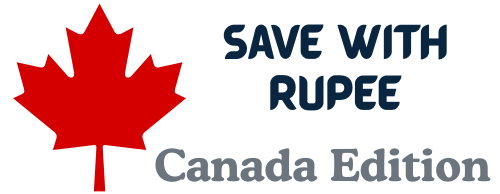Learn everything about mortgage loans in Canada for 2025. Step-by-step guide on types of mortgages, qualifying, down payments, pre-approval, and tips for first-time homebuyers.
Mortgage Loans in Canada – A Beginner’s Guide (2025)
Buying a home is a major milestone for many Canadians, and understanding mortgage loans is essential to making a confident purchase. Mortgages often represent the largest financial commitment a person makes, so knowing the basics, options, and process helps avoid confusion and costly mistakes. This comprehensive beginner’s guide explains mortgage loans in Canada for 2025, steps to qualify, and expert tips to get the best deal.

What Is a Mortgage Loan?
A mortgage loan is a type of secured loan used to buy or refinance real estate. You borrow money from a lender, such as a bank or credit union, to purchase a home and repay it gradually with interest over an agreed term. The property acts as collateral, giving the lender security in case of default.
Steps to Getting a Mortgage in Canada
- Assess Your Finances:
Evaluate your credit score, existing debts, and savings to ensure you can afford mortgage payments and other homeownership costs. - Find a Mortgage Broker or Lender:
Mortgage brokers can help compare offers from multiple lenders, including banks, credit unions, and alternative lenders. - Get Pre-Approved:
Pre-approval estimates how much you can borrow and locks in an interest rate for a period. It strengthens your home purchase offer. - Choose the Right Mortgage:
Decide between fixed-rate (stable payments) or variable-rate (potentially lower rates but fluctuating payments) mortgages. Terms usually range 1-10 years. - Submit Your Application:
Provide income proof, employment verification, credit report, and details about the property. - Property Appraisal:
Most lenders require a professional appraisal to verify the home’s value. - Mortgage Approval and Closing:
After approval, sign the mortgage contract and complete the home purchase with your lawyer or notary.
Types of Mortgages in Canada
| Mortgage Type | Description | Who It’s For |
|---|---|---|
| Fixed-Rate Mortgage | Interest rate stays fixed for the term | Buyers seeking payment stability |
| Variable-Rate Mortgage | Rate fluctuates with market benchmarks | Risk-tolerant buyers looking for savings |
| High-Ratio Mortgage | Down payment less than 20%, requires mortgage insurance | First-time buyers with limited savings |
| Conventional Mortgage | Down payment 20% or more, no insurance | Buyers with larger down payments |
| Open Mortgage | Flexible prepayment options without penalties | Buyers expecting to pay off quickly |
| Closed Mortgage | Lower rates but with limits on prepayments | Long-term buyers preferring lower costs |
Key Terms to Know
- Down Payment: Minimum 5% for homes under $500,000; higher for expensive properties.
- Amortization: Total length to pay off your mortgage, typically 25 years.
- Mortgage Default Insurance: Required for high-ratio mortgages, protects lender if you default.
- Pre-Approval: Lender commitment based on your financials, valid typically for 90-120 days.
- Closing Costs: Additional fees like legal fees, land transfer tax, and inspection costs.
Special Mortgage Programs for Newcomers
Canada offers newcomer-friendly mortgage programs with lower credit history requirements and flexible income verification. Banks like RBC, TD, and Scotiabank provide tailored options to help immigrants enter homeownership faster.
Tips for First-Time Homebuyers
- Improve your credit score before applying.
- Save aggressively for a down payment to reduce insurance costs.
- Get mortgage pre-approved early in the home search process.
- Work with experienced mortgage brokers and real estate agents.
- Consider total homeownership costs, including taxes, utilities, and maintenance.
Real-Life Story: First-Time Buyer Success
Anita and Raj moved from India to Toronto in 2024. They used a newcomer mortgage program with a 5% down payment and no Canadian credit history required. With help from a broker, they secured a variable-rate mortgage with competitive rates and moved into their condo within six months. Their methodical preparation and professional guidance made the dream of homeownership real.
Common Mortgage Pitfalls
- Overstretching budget beyond affordable payment levels.
- Ignoring total costs beyond principal and interest.
- Not shopping multiple lenders for best terms.
- Missing pre-approval steps causing purchase delays.
- Failing to understand prepayment and penalty clauses.
Frequently Asked Questions (FAQs)
Q1: What is the minimum down payment in Canada?
A1: 5% for homes under $500,000; 10% for portion above $500,000 up to $1 million; 20%+ for over $1 million.
Q2: What is mortgage default insurance?
A2: It protects lenders on high-ratio mortgages, typically mandatory when down payment <20%.
Q3: How does a fixed-rate mortgage work?
A3: Interest rate stays the same for the term, so payments are predictable.
Q4: Can newcomers get a mortgage without Canadian credit history?
A4: Yes, some banks offer programs allowing international credit verification.
Q5: What factors affect my mortgage approval?
A5: Credit score, income stability, debt-to-income ratio, down payment amount, and employment status.
Call to Action
Thinking about buying your first home in Canada? Start by understanding mortgage loans and assessing your financial readiness. Work with trusted mortgage brokers, explore newcomer programs, and get pre-approved to make your homeownership goals a reality. Visit cad.savewithrupee.com for beginner-friendly mortgage guides, lender comparisons, and tips tailored for 2025 buyers!
🍁 Smarter Money Tips for Canada

Discover our guides on credit cards, loans, insurance, and savings designed for Canadian readers.
💡 Explore Canadian Guide